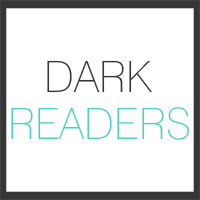Lawless is BACK!! And here we are the day before publication umping on the Blog tour, it's day six and we're looking at one of my favourite topics books that inspire books! So over to Mr William Sutton....
SEVEN BOOKS THAT ELECTRIFIED THE HOUSE OF ELECTRICITY
“How long?!” he burst out, indignant. “I never stop researching.”
He explained that he, years after finishing scripts, still bought books, watching documentaries, still researching. You can’t escape the tug, once hooked: that’s what Robinson means.
So you often find yourself researching the wrong novel, or your previous novels, or the filmscript you never wrote, or the school project on Provence you did, aged 12.
RESEARCH - THE R-WORD
The Steampunk feel of my novels lends a certain licence, but does not excuse me from justifying events as realistic. In fact, historical novelists often agonise about such details, such as London’s extensive hydraulic power network in Lawless and the Devil of Euston Square: you can distinguish the real from the fantastical with the help of these notes. But researching Lawless and the House of Electricity was more simply reading for pleasure. I’ve stolen from fiction and non-fiction (sources on my blog). With the help of Austin Kleon’s Steal Like an Artist, I am getting better at stealing quickly and effectively.
Here’s seven of the science books, country house books, and biographies I mined to construct my own House of Electricity.
 ILLUMINATING ILLNESS
ILLUMINATING ILLNESS 1. Medical Muses: Hysteria in Nineteenth-Century Paris
Asti Hustvedt’s brilliant dissertation on Charcot and his hysteric performers at the Saltpêtrière Hospital in Paris taught me more about Victorian illness,
madness and diagnosis than I could have hoped for.
I’d spent a week fighting my editor over the diagnosis of Lady Elodie’s illness in this book. “What would the illness now be diagnosed as?” she demanded. “That’s not relevant,” I replied, “and why do we assume we’d be right, and they were wrong?”
2. The Psychopath Test
 Jon Ronson’s hilarious exposé questions the psychological language that has crept inexorably from US psychologist into UK diagnosis and common parlance: sociopathy, attention deficit, borderline personality... Though useful, these diagnoses (he points out) have been accepted not on objective grounds but more statistical. To diagnose using these quantitative criteria (ie how many questions on a list of symptoms get ticked) rather than qualitative pleases Health Services and insurance companies, but it pleases big pharmaceuticals even more. Further convinced of our diagnostic ignorance by Ronson, I have written a song about Victorian Diagnoses for the Writing Edward King project.
Jon Ronson’s hilarious exposé questions the psychological language that has crept inexorably from US psychologist into UK diagnosis and common parlance: sociopathy, attention deficit, borderline personality... Though useful, these diagnoses (he points out) have been accepted not on objective grounds but more statistical. To diagnose using these quantitative criteria (ie how many questions on a list of symptoms get ticked) rather than qualitative pleases Health Services and insurance companies, but it pleases big pharmaceuticals even more. Further convinced of our diagnostic ignorance by Ronson, I have written a song about Victorian Diagnoses for the Writing Edward King project.
HOT HOUSES
3. The Pursuit of Love
The interloper amongst aristocrats is the reader’s way into JB Priestley’s Bright Day and Waugh’s Brideshead Revisited, but it is Nancy Mitford’s The Pursuit of Love that I recognised the irrepressible yearnings of childhood that I wanted to give to the children in Roxbury House, reported by our interloper Molly.
4. Wuthering Heights
Re-reading Emily Brontë’s novel now, I can’t see that, at 15, I understood the love and the loss. The things that break my heart are:
- Heathcliff persuading the gravedigger to dig up Cathy’s grave, to lay her ghost to rest.
- Nellie Dean, who tells most of the story, trying to convince herself and us, that she wasn’t responsible for Cathy’s death.
My wife had to ban me from listening to the audiobook, I came home weeping so often.
TECHNOLOGICAL & BIOGRAPHICAL
5. The Music Room
 William Fiennes' book, amidst its moving celebration of his brother’s life, tells the origins of therapeutic electrical stimulation. One Flew Over the Cuckoo’s Nest convinced our generation that ECT was an evil, but it has an august history (and perhaps future: BBC Radio 4 Frontiers episode “Vagus Nerve”, 26 November 2014)
William Fiennes' book, amidst its moving celebration of his brother’s life, tells the origins of therapeutic electrical stimulation. One Flew Over the Cuckoo’s Nest convinced our generation that ECT was an evil, but it has an august history (and perhaps future: BBC Radio 4 Frontiers episode “Vagus Nerve”, 26 November 2014)6. William Armstrong: Magician of the North
Henrietta Heald’s biography does not just bring the titan of Victorian technology to life, it makes us imagine the world from before steam power all the way to coal running out: and all of this was encompassed in the mind of the great inventor and industrialist (inspiration for the Earl of Roxbury) who profited from coal, steam, weapons and ship-building, but dreamt of a world powered by water and electricity.
7. Edward Lear: The Life of a Wanderer
Lear is just a minor character, but it was Vivien Noakes' description of the young painter’s welcome at Knowle House, elevating him from struggling nobody to tutor to the aristocracy (he taught Queen Victoria) that first inspired the employment of Molly, the street urchin of my first two books, by the Roxbury family.
Lawless and the House of Electricity, the third instalment in the Lawless series is out tomorrow (22nd August) so grab a copy let us know what you think and check out the other stops on the blog tour! You can check out more from William SUtton at: www.william-sutton.co.uk f/williamgeorgeq t @WilliamGeorgeQ

















0 comments:
Post a Comment